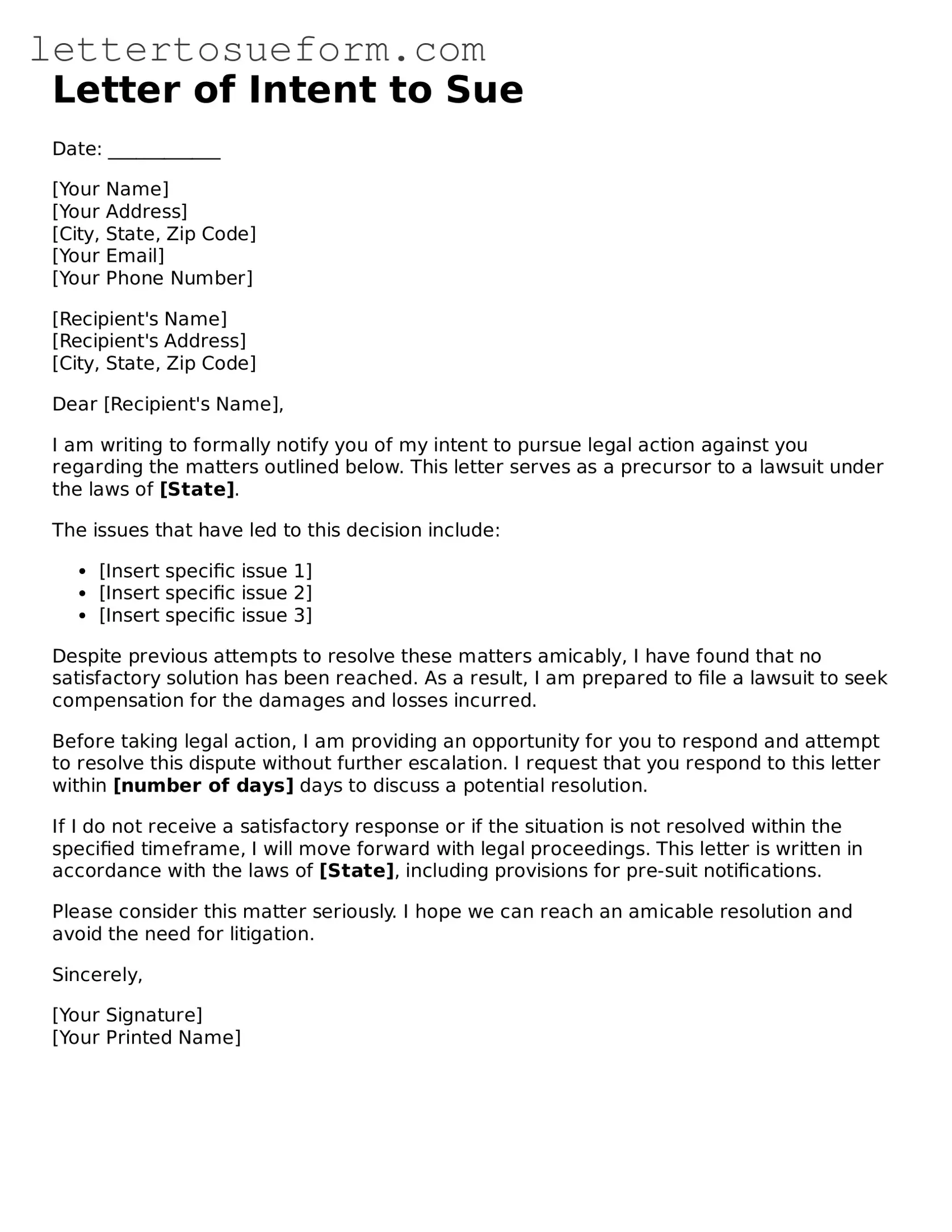A demand letter serves as a formal request for payment or action. It outlines the grievances of the sender and specifies what they seek as a resolution. Like a Letter of Intent to Sue, a demand letter typically precedes legal action, aiming to resolve disputes without going to court. Both documents express a serious intention to pursue legal remedies if the issue is not resolved promptly.
A notice of claim is often used in situations involving government entities. It notifies the government of an impending lawsuit and provides them with an opportunity to address the claim before litigation begins. Similar to a Letter of Intent to Sue, it is a preliminary step that seeks to avoid formal legal proceedings by encouraging resolution through negotiation.
In matters of legal responsibility, understanding the nuances of documentation is crucial; for example, a Legal PDF Documents can provide clarity in situations where vehicle ownership changes hands, ensuring that previous owners are shielded from future liabilities associated with the transferred vehicle.
An affidavit of service is a document used to confirm that legal papers have been delivered to the appropriate parties. While it does not express intent to sue, it is a critical component of the legal process that follows a Letter of Intent to Sue. Both documents are essential in ensuring that all parties are informed and that legal procedures are properly followed.
A complaint is the formal document filed with the court to initiate a lawsuit. It details the plaintiff's claims against the defendant. While a Letter of Intent to Sue expresses a desire to resolve a dispute outside of court, a complaint signifies that the plaintiff has decided to pursue legal action. Both documents outline the issues at hand, but they differ in their stage within the legal process.
A settlement agreement is a contract between parties to resolve a dispute without continuing to trial. It often follows a Letter of Intent to Sue if negotiations are successful. Both documents aim to find a resolution, but a settlement agreement is the result of negotiations, whereas a Letter of Intent to Sue indicates the potential for litigation if a resolution is not reached.
A mediation request is a document that seeks to engage a neutral third party to facilitate a resolution between disputing parties. Similar to a Letter of Intent to Sue, it reflects a willingness to resolve issues amicably before escalating to litigation. Both documents emphasize the importance of communication and negotiation in resolving disputes.
An arbitration agreement outlines the terms under which parties agree to resolve their disputes through arbitration rather than litigation. This document can be similar to a Letter of Intent to Sue in that it represents a commitment to resolve issues outside of court. Both seek to provide a structured approach to conflict resolution, although arbitration is typically binding.
A release of liability form is used to waive potential claims against another party. While it is often signed after a dispute has been resolved, it shares similarities with a Letter of Intent to Sue in that both involve an understanding of the risks and consequences of legal actions. Each document reflects the parties' awareness of their rights and the implications of their agreements.
A cease and desist letter is a formal request to stop an alleged illegal activity. It serves as a warning that legal action may follow if the behavior does not cease. Like a Letter of Intent to Sue, it communicates the seriousness of the situation and the sender's intent to protect their rights, often serving as a precursor to more formal legal action.
